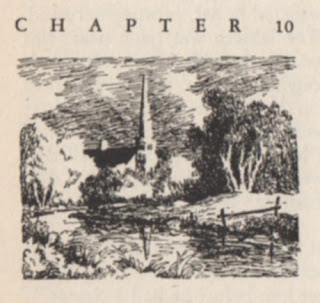All This Difference
Dorothy Dumbrille
Toronto: Progress, 1945
208 pages
Progress Books, publishing arm of the Communist Party of Canada, announced April 15, 1945 as the publication date of Dorothy Dumbrille’s All This Difference. I’ve found no evidence that the novel hit the shelves on that day, that month, or in the three months that followed. The earliest reviews — and there were many — are from early August of that year. I can’t help but wonder whether its delay had something to do with the publication of Two Solitudes, which occurred a few weeks before All This Difference was to have been released.
MacLennan's novel was received not as a book of the season, but a book for all time. Globe and Mail literary editor William Arthur Deacon’s April 7 review begins:
Spectacular as was Canadian achievement in the novel in 1944, Hugh MacLennan of Montreal has opened 1945 with greater power. In light of Two Solitudes, the excellence of Barometer Rising diminishes to the level of an apprentice piece. The promise of the first book is justified abundantly in the second. Considering style, theme, characters, craftsmanship, significance and integrity, Two Solitudes may well be considered the most important Canadian novel ever published.
The English press praised the book, as did the French, and sales were strong. By that October, MacLennan’s novel had sold 45,000 copies and was in its sixth printing. I can’t say I’ve ever visited a used bookstore in this country that didn’t stock a copy. And yet, though I kept an eye out, it was years before I first saw a copy of All This Difference. The first was at the home of my Montreal friend Adrian King-Edwards, owner of The Word bookshop. A couple of years later, I spotted another on a dollar cart outside Attic Books in London, Ontario. I haven’t come across another since.So begins my review of All This Difference, posted yesterday at Canadian Notes & Queries online. You can read the whole thing here:
Dorothy Dumbrille's Communist ManifestationHer second novel, but first to be published in book form, it's a highly ambitious work, as reflected in this publisher's advert:
 |
| The Globe & Mail 4 August 1945 |
The only other edition of All This Difference followed eighteen years after the first. Lacking the McCormick illustrations, it came from a very different publisher.
 |
| Toronto: Harlequin 1963 |
It also holds the distinction of being the only "HARLEQUIN CANADIAN."*
Wish they'd kept that up. Would've made my work a whole lot easier.
* My friend bowler informs that one other title, Kate Aitken's Never a Day So Bright, also bears the "HARLEQUIN CANADIAN" label.
Related post:


































